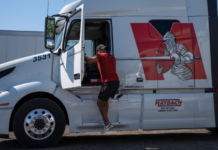Packing to move long-distance isn’t all it’s cracked up to be. You will realize pretty quickly that getting everything packed and ready to go can be an enormous task. It’s not something everyone is up for. Forbes notes that the average moving cost has increased between 2020 and 2021. With this consideration at the back of your mind, you’ll need to be extra-efficient in your moving plans. Packing is the most crucial part of moving your stuff since it helps you secure the fragile and valuable things, so they don’t get damaged. With years of experience in both local moving and long-distance moving, californiamoversusa.com offers super service at an affordable cost.
Here are a few of the vital packing tips you need to pay attention to when planning a move.
1. Do Get Rid of the Expendables
George Carlin famously said that our homes are just places for us to keep our stuff. When you’re moving, not all that stuff should go with you. Inventory your property to see what makes sense moving and what doesn’t need to go. The things that fall into the “not necessities” list should either be given away or sold to cover moving costs, depending on demand for the item. Online marketplaces make it really easy to put used stuff up for sale, and you should take advantage of them when moving to reduce the clutter in your home.
2. Do Get a Handle on Your Supplies
Packing tape, scissors, and boxes are the most common moving supplies you’ll need. It’s important to note that packing supplies may not all need to be bought. Big box stores and groceries have tons of boxes that they don’t use. Asking one of them for their boxes will help them get rid of their own clutter and allow you to recycle them as moving cartons. Alternatively, if you have the money, you can invest in plastic bins. These serve as moving tools and can be repurposed as storage bins for particular items at your new location. Padding is another essential moving item that many people overlook. If you’re carrying things that could be damaged in transit, filling the box with foam or bubble wrap can go a long way towards preventing damage.
3. Don’t Pack Heavy
Do you know what causes most of your damage in transit? When you overpack heavy boxes. One of the biggest issues movers have is ensuring that boxes don’t shift about while they’re driving. Instead of packing your boxes heavier, consider using more boxes. If you’re getting them for free, you don’t have to worry about the added cost. Packing lighter makes life easier for you and whoever needs to unload the boxes at the end of the trip. It might even help you unpack faster since it’s easy to just pick an afternoon that you’re free and start sorting stuff out of boxes. You also want to make sure your stuff is snug at the back of the moving truck and in your own vehicle (if you’re using it). This packing method also helps prevent items from shifting around and knocking into one another. Who said Tetris was useless?
4. Do Cut Some DIY Box Handles
Unless you intend to reuse the cardboard boxes afterward, you should consider them as disposable or recyclable. Using a box-cutter to make a few easy-carry handles in the boxes will go a long way towards making them easier to carry from point to point. However, you should be wary when making these adjustments. DIY handles are handy, but not all boxes are made for this kind of modification. Cutting holes in some flimsy boxes might compromise their structural integrity and lead to them falling apart in someone’s hands. Additionally, you should remember to pack light, as we mentioned above. Heavy boxes don’t work well with easy-carry handles.
5. Don’t Pack Top-Heavy Boxes
Have you ever noticed that experienced packers at grocery stores pack items a certain way? You should learn from their example. Heavier items at the bottom of a moving box give it more stability. There’s less chance the package will topple, spilling all its contents across the moving truck’s rear. Lighter items can go on top because they’re less likely to be damaged by the jostling inside the vehicle. Don’t fill boxes completely since it adds to the weight and could lead to problems with unpacking. It’s much better to have more half-filled boxes than to have a few overly-filled boxes.
6. Do Label Your Boxes By Room and Priority
This tip is something that a lot of first-time moving clients don’t realize. When you’re packing cardboard boxes, you might think you’d be able to recognize what’s inside one compared to the other. After all, they all have brand names and stuff on them, right? But which brand name corresponds with which room? What should be unpacked first? To save yourself this frustration, using a sharpie on your boxes to label them by room and priority will hint at what should be moved when. Numbering the boxes and having a handy record book or sheet will help you keep track of your inventory. If something goes missing, you’ll realize right away what happened.
7. Do Label Electronics and Wires
Is this connector for that appliance? Many of us overlook these minor details in our moves, and we end up using the wrong cords for the wrong connectors when we get to our new place. Thanks to a modular design, it doesn’t lead to a whole world of problems in many cases. Unfortunately, just because a cord fits at a particular socket doesn’t mean it belongs there. Voltage ratings may differ between electronic devices, and using the wrong connector could cause damage to the internals. Ideally, you should consider labeling the cords before you unplug them to avoid any mix-ups and mishaps when you move to your new place.
8. Don’t Interlock the Box Tops
One of the moving tips many people have from their youth is that the best way to save tape (and money) is to interlock the box tops. When you’re moving over a short distance, you might be able to get away with this, but it makes the boxes themselves unstable. If you’re stacking boxes, the chances are that the interlocked ones will cave in long before you get to your final location. What’s the alternative? The best way to guarantee stability for your boxes is to use tape on the parallel edges even when they’re stacked. Taping up those boxes gives you a more solid foundation to stack other boxes on top of.
9. Don’t Bother to Unpack your Drawers
It might seem counterintuitive to do this, but it saves a lot of time in your final movie. If you never unpack your dresser drawers, you don’t need to repack them at your destination. Overall, it makes for a heavier dresser, but you and your friends or moving guys can handle it. Most moving companies suggest you leave the drawers inside the dresser because it makes life easier for them. As a bonus, you’ll probably reduce the number of boxes you need to carry your stuff in as well. If you can spare a little extra expense, consider plastic-wrapping the doors of the drawer.
Choosing the Right Movers
Moving can be a complex task, and you need the right partners to help you. It’s not all about managing costs either. You need a company with a good reputation that knows what it’s doing. Give us a call today to find out more.



































































